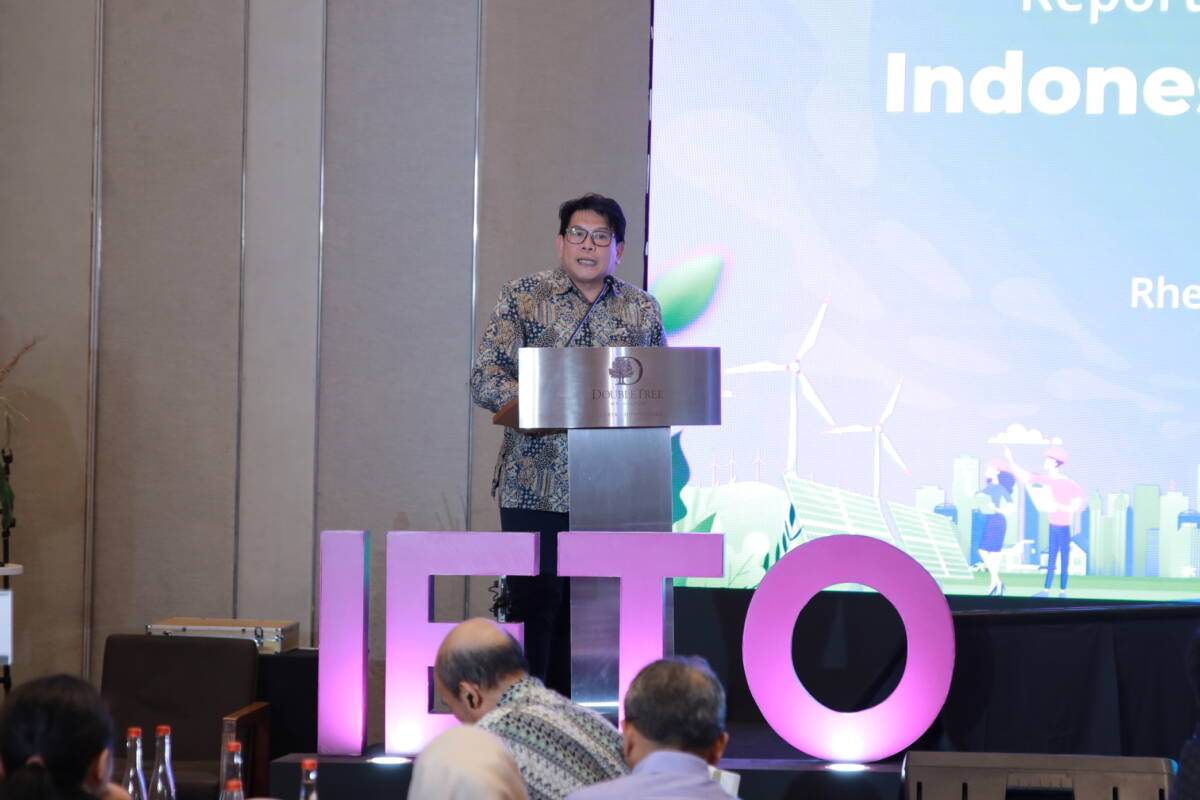Jakarta, November 20, 2025 – By the end of 2025, Indonesia’s energy transition remains largely rhetorical and continues to fall short of its stated goals. Although commitments to renewable energy appear to have strengthened over the past decade, the dominance of fossil fuels has in fact increased, further deepening the country’s dependence on fossil-based energy supply. The energy transition agenda promoted by the previous administration has yet to materialize into concrete action. Meanwhile, President Prabowo’s pronouncement to phase out fossil fuels within 10–15 years and achieve 100 percent renewable energy is confronted with a significant implementation gap.
IESR released the Indonesia Energy Transition Outlook (IETO) 2026, Rhetoric or Reality Aligning Economic Growth with Energy Transition on Thursday (20/11). Published annually since 2018, the report tracks Indonesia’s energy transition progress and the enabling conditions that support or hinder it. For nine consecutive years, Indonesia has failed to meet its renewable energy mix target, originally set at 23 percent by 2025 in the 2014 planning framework. By mid-2025, the share had only reached around 16 percent. Without a change in direction, IESR projects that if Indonesia continues to depend on fossil fuels, the government’s 8 percent economic growth target for 2029 will result in a 17 percent increase in emissions by 2040, making the 2060 net-zero goal even more difficult and costly to achieve.
IESR asserts that Indonesia must demonstrate credibility by moving beyond rhetoric, strengthening policy consistency, upgrading grid and storage infrastructure, and closing the financing gap. Positive developments such as falling renewable energy costs, the rapid growth of supporting industries like electric vehicles and batteries, and a sizable pipeline of renewable energy projects ready for construction represent strategic advantages that must be leveraged if Indonesia is to position itself as a renewable energy leader in the region.
IESR Chief Executive Officer (CEO) Fabby Tumiwa stated that Indonesia faces a paradox where the country is reluctant to move away from fossil fuels despite possessing vast renewable energy potential. The continued preference for coal-fired power plants also runs counter to global trends, where many developed countries are beginning to phase them out. Moreover, global investment in clean energy in 2024 is expected to be ten times higher than investment in fossil fuels.
“Indonesia’s energy transition is moving slowly due to three structural barriers, such as an incoherent regulatory framework, fiscal policies that continue to incentivize fossil fuel use, and fragmented institutional priorities. The government’s inability to address these obstacles has hindered the development of renewable energy and energy efficiency and has contributed to the worsening clean energy investment climate,” said Fabby.
IESR Electricity System Analyst Abraham Octama Halim explained that Indonesia’s electricity demand is growing rapidly between 3 and 10 percent annually. This rising demand should ideally be met by renewable energy so that the renewable energy mix can increase significantly. Outside the Java–Bali grid, renewable power plants have the potential to replace diesel and coal generators, which would help reduce electricity production costs. A simulation of a 100 percent renewable energy system conducted for the islands of Timor and Sumbawa, dominated by solar power and batteries, shows that generation costs could fall by 3 to 21 percent while maintaining strong system reliability. Unfortunately, this potential remains far from being realized.
“Instead of increasing, the renewable energy mix in the on-grid system has actually declined over the past five years. From 13 percent in 2020, it dropped to just 11.5 percent in 2024. This figure falls short of the 2021–2030 RUPTL target of 15 percent. We identified a large gap between Indonesia’s abundant renewable energy potential, the planning process, and actual implementation in the field. This indicates persistent challenges in translating government ambitions into real projects,” he added.
Putra Maswan, Financial and Economic Analyst at IESR, added that the renewable energy budget at the provincial level for 2025 remains relatively small, only IDR 426.7 billion across 33 provinces. This limited budget restricts the ability of local governments to develop renewable energy infrastructure, which in turn keeps the renewable energy mix low. He cited Bali as an example, despite having solar potential of up to 21 GW, the province has achieved less than three percent of its 11 percent renewable energy target for 2025.
To accelerate Indonesia’s shift toward a renewable energy future, IESR recommends six key steps. First, develop a clear and measurable fossil fuel retirement plan. Second, undertake institutional and regulatory reforms. Third, scale up the deployment of solar power, wind power, and battery storage. Fourth, promote the relocation or development of industries in regions with clean energy availability (low-carbon powershoring). Fifth, strengthen renewable energy financing while reducing fossil fuel subsidies. Sixth, ensure more meaningful public participation.

